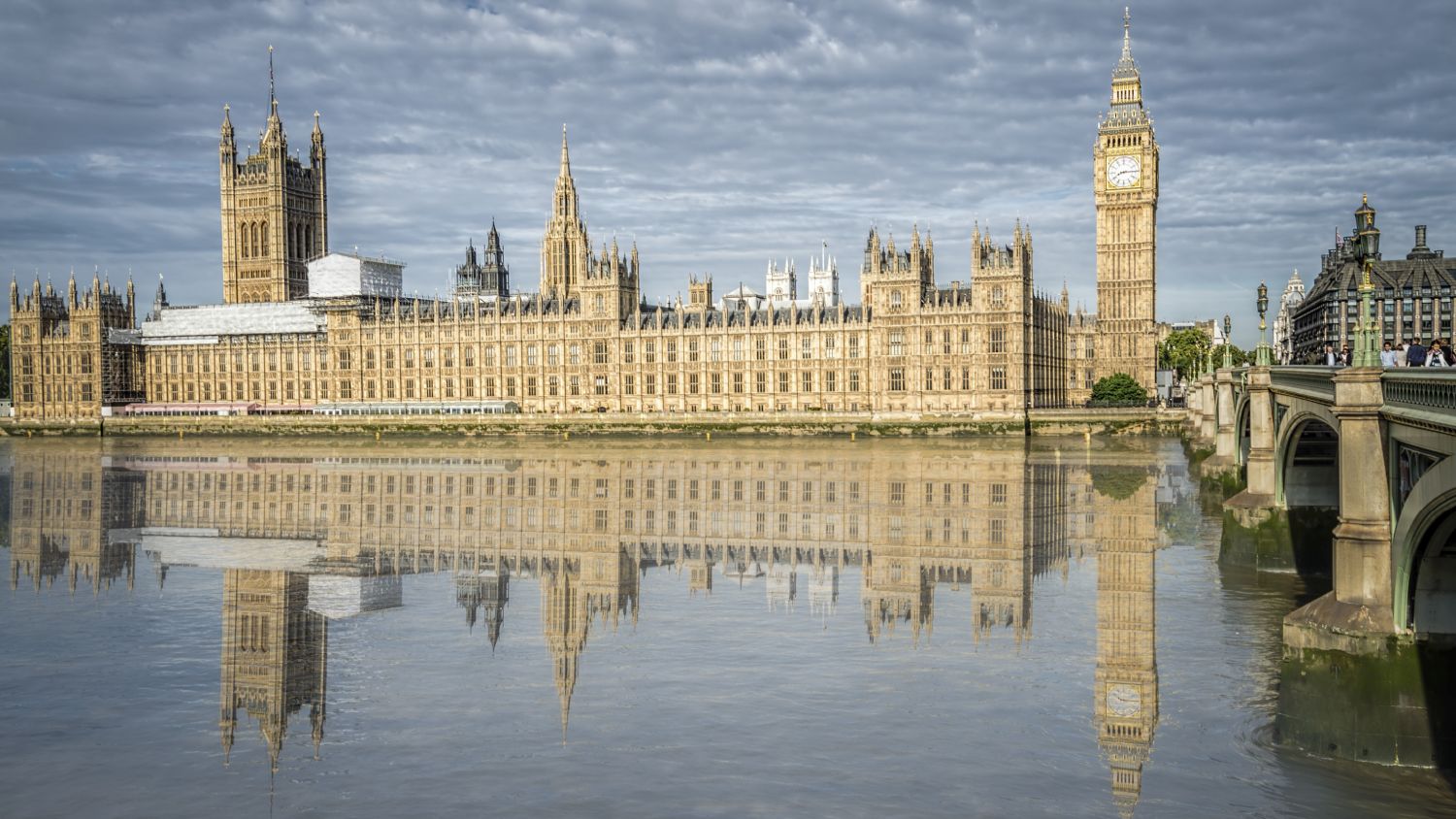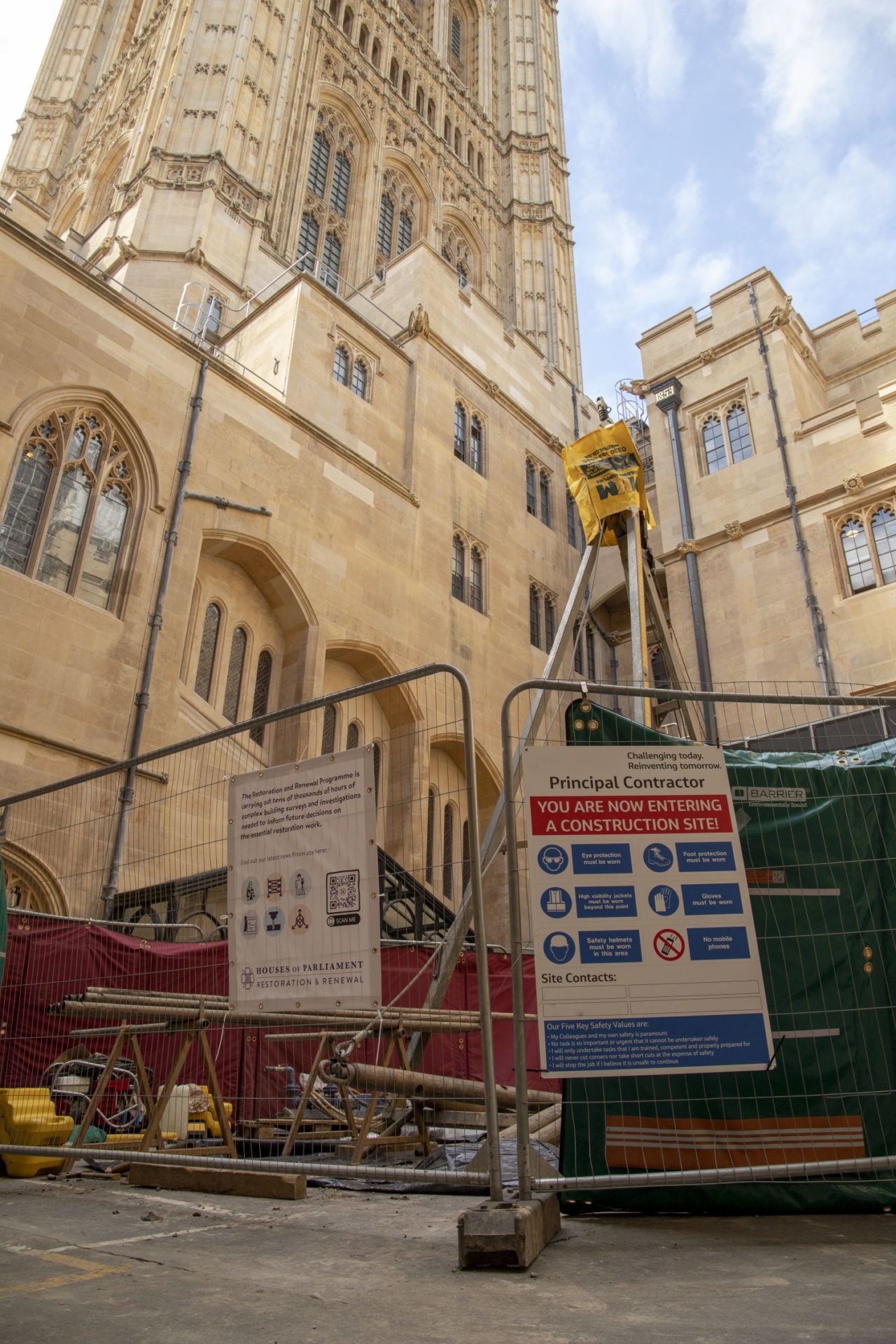
Surveyors have discovered the possible remains of a 700-year-old Thames River wall, during work on the Palace of Westminster.
They unearthed the wall during thousands of hours of investigative surveys led by the Restoration and Renewal Delivery Authority. The surveys aim to map the condition of the Palace of Westminster before a lengthy restoration programme begins.
Over the summer and early autumn, specialists spent 4,850 hours examining 160 rooms and drilling boreholes up to 70m deep to assess ground conditions around the Palace.
During a geotechnical borehole investigation in Chancellor’s Court, near the House of Lords chamber, surveyors discovered a section of possible medieval river wall. They paused the borehole drill while archaeologists from the Museum of London Archaeology (MOLA) assessed the discovery.
700-year-old structure
The structure is likely to be at least 700 years old. It is made from Kentish Ragstone, a hard grey limestone quarried from Kent that was also used in the construction of the Tower of London and Westminster Abbey.

Borehole drills gathered dozens of ground samples from under the palace. A specialist lab in Coventry will test them to better understand the composition of the ground. MOLA will also conduct its own archaeological report based on the data from the boreholes to confirm more about the discovery.
It is likely this is the second finding of a part of the medieval river wall which runs under Parliament. Surveyors first identified it in Black Rod’s Garden in 2015, when they discovered medieval timber structures thought to represent waterfront revetments. The wall runs alongside the medieval location of the riverside. When the palace was built in the 1800s, after many of the medieval buildings burned down, land was reclaimed from the Thames to make the site bigger.

Programme of inspections
Elsewhere, surveyors inspected 160 rooms across Parliament to look at a range of issues such as wall cavities, the material makeup of the building and the weight-bearing of historic flooring. Specialist teams will continue to inspect the hundreds of miles of interconnected power cables, gas, water and heating pipes, as well as outdated water and sewerage systems.
Since January, Restoration and Renewal Programme teams have examined more than 2,089 spaces across the Palace of Westminster. Other surveys conducted earlier in 2022 include a thermographic study of heat loss from the building, examination of room spaces, and studying conditions just under the surface of the ground to measure tree roots and other obstructions which could impair restoration works.
In July, both Houses of Parliament approved a new approach to govern and deliver the work to restore and renew the Palace of Westminster. As a result, Parliament agreed the programme of works should initially focus on the following priority areas:
- Fire safety and protection
- Replacement of mechanical, electrical, drainage and plumbing, and data and communications systems
- Asbestos management and wider health and safety issues
- Conservation of the building fabric including stonework.
The Restoration and Renewal Programme will develop options, guided by the R&R Delivery Authority, which will include a variety of ways in which they can deliver the works. These include minimising the time and extent to which MPs and staff will move out of the palace, and different levels of ambition for the works.
‘More finds to come’
David Goldstone, CEO of the Houses of Parliament Restoration and Renewal Delivery Authority, said: “We’re getting on with the job of protecting the Palace of Westminster, carrying out thousands of hours of surveys to understand the condition of the building. This is a national effort, calling on businesses and expertise from across the nation.
“Small- and medium-sized companies are already benefiting from Restoration and Renewal Delivery Authority surveying work, with five out of our seven recent contracts awarded to small- and medium-sized enterprises.”
Patsy Richards, interim CEO of the Houses of Parliament Restoration and Renewal Sponsor Body, said: “We expect more exciting finds from dozens of surveys carried out over the coming months. We are also working really closely with the teams who keep the Palace running now. As we learn more from our surveys, we can develop in more detail proposals to agree a safe and cost-effective way to plan the work needed to restore the Palace of Westminster and preserve it for future generations.”










